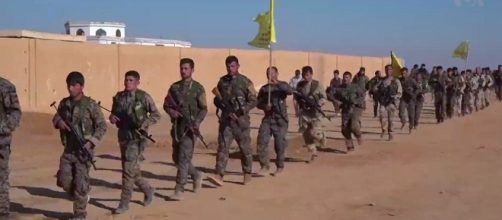ISIS had started using drones to attack U.S. spec ops and Kurdish troops as they attack Raqqa. Reports reveal that drones controlled by the Jihadists can disrupt the ability to call in air strikes, drop rudimentary bombs and provide invaluable surveillance Intel over the battlefield.
How can ISIS drones cause havoc on Kurdish fighters in Syria?
According to sources, the types of drones used by ISIS fighters are simply improvised video footage drones. ISIS propaganda videos show drones equipped with the ability to drop crude explosives, mortar rounds, and small bombs.
Although at the moment there are no casualties directly inflicted by these drones, many are fearing that it will lead to more sophisticated drones in use by the ISIS group in the future.
According to a report by the Washington Post, ISIS can easily release drones to SDF positions as Kurdish troops are not well-equipped. Soldiers on the ground often mistook these drones as "friendlies" only to be surprised when bombs start to fall. This is a problem that is not yet addressed properly by the SDF military and U.S. special operations personnel in the area.
What is the status of the Raqqa offensive and the retaking of Mosul in Iraq?
There are two major offensives conducted by U.S. backed forces in Syria and Iraq.
The Raqqa offensive spearheaded by the predominantly Kurdish-SDF fighters and the Mosul offensive undertaken by the Iraqi army. These two major strongholds are considered by ISIS as de facto capitals in both Syria and Iraq. Currently, the fight to take back these two cities is going well, though it is slower than previously planned.
As these events happen near Raqqa, much of Syria is being "liberated" by Assad's forces as they storm through the Southern and Eastern Syrian desert, retaking large swathes of ISIS territory. At the moment, the Assad's army had taken so much land that Syria and Iraq now share borders once again since 2013.
Earlier this week, Syrian officials have made an agreement with Iraqi counterparts to cooperate in destroying ISIS.
This meant sharing of information about ISIS movements, the mutual agreement of denying entry to fleeing ISIS fighters and to work together in any offensive against ISIS strongholds along the Iraq-Syrian border. The United States and Russia are also actively supporting the assault on ISIS territory in the highly contested East Syria region.


